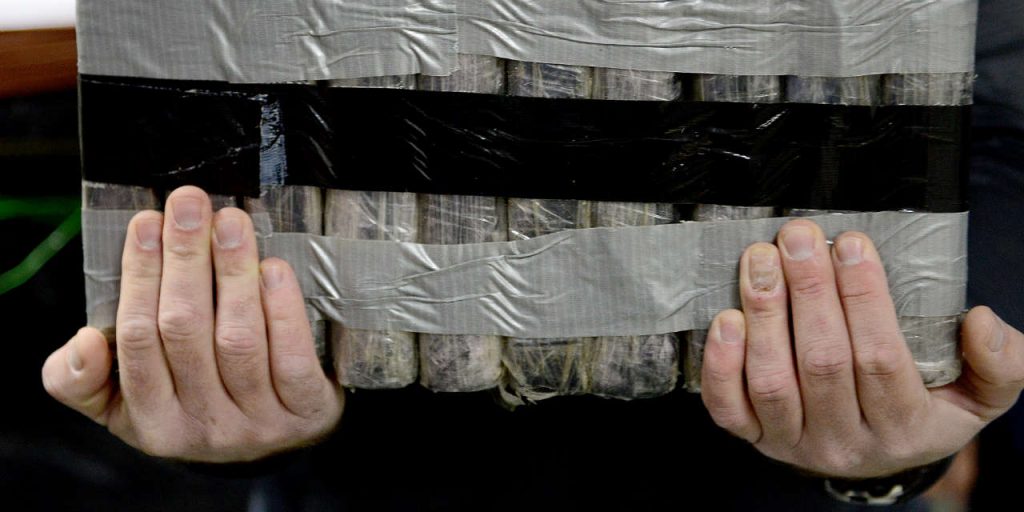Colombia’s potential cocaine production went up while less drugs were seized in 2018, resulting in a 13% increase in potential cocaine exports.
According to the United Nations Office on Drugs and Crime (UNODC), the country’s potential cocaine production went up 6% from 1,058 metric tons in 2017 to 1,120 last year.
Colombia’s defense ministry reported a 5% drop in cocaine seizures from 435.5 metric tons in 2017 to 414.5 last year.
Consequently, potential exports of the illicit drug would have gone from 623 metric tons in 2017 to 706 last year.
Colombia’s potential cocaine exports
Source: UNODC / National Police
Less hectares needed for more cocaine
The UNODC’s Colombia chief, Pierre Lapaque, last week celebrated the slight drop in hectares affected by the production of coca, the base ingredient for cocaine, but warned about the growing intensity of coca per square kilometer.
Coca cultivation in Colombia dropped slightly in 2018: UN
According to the UNODC, the potential production of coca leaves went from 1,095 metric tons to 1,150 metric tons and from 6.3 kilograms of cocaine per hectare in 2017 to 6.5 kilograms last year.
This trend isn’t new. According to the UNODC, while the production of coca increased 77% in the past three years, this only affected 4% more of square kilometers.
The UNODC additionally reported that the yield of coca cultivation continued to increase. While one hectare of coca produced 4.7 metric tons of coca leaves in 2017, this increased 21% to 5.7 metric tons last year.
UNODC
The concentration of coca and the increase in cocaine production is not necessarily bad news, but presents different challenges to the authorities, according to the UNODC.
UNODC
One of these challenges is the increased involvement of illegal armed group in the cultivation of coca, who historically were more lucrative element of the drug trade, moving the drugs to the country’s export points.
These groups pose a serious threat not just to the farmers, but to governability in general because of their financial capacity to corrupt local authorities and those in charge of fighting drug trafficking like the police and the military.
UNODC
The UNODC insisted in the necessity of the government to effectively guarantee state presence in historically abandoned and neglected territory in order to effectively disrupt and diminish cocaine production.
Is there hope for this year?
Colombia’s security forces have prioritized the forced eradication of coca and reported the forced eradication of 59,978 hectares of coca in 2018. Yet, at the end of the year the UN measured only a decrease in coca cultivation of two hectares, indicating how many hectares are replanted after an eradication operation or spring up elsewhere.
In the first five months of this year, the Defense ministry said it had increased the number of forcibly eradicated hectares of coca with 50.7%.
But in the same time, the authorities seem to be dropping the ball when it comes to cocaine seizures that have dropped another 20% in the first five months of this year, according to the Defense Ministry.
The hope is that the government will resume the crop substitution program that is part of the peace process with the FARC, which has a much higher success rate than the government’s repressive strategy; only 0.6% of the hectares that were voluntary eradicated saw a return of coca against 50% of the forcibly eradicated hectares.
Furthermore, with more antinarcotics resources used for ineffective forced eradication, less would be available for the interdiction of drug shipments moved from the coca fields to the export hubs.


